When we talk about addiction treatment, the conversation often centers on access: How do we get people into care? What barriers stand in the way? How can we remove them? These are important questions—but they’re only part of the story.
Recovery doesn’t end when someone finishes a 28-day residential program or completes an outpatient cycle. In fact, that’s often when the most vulnerable period begins. Without consistent housing, community support, and long-term services in place, many people find themselves navigating recovery with few tools and even fewer safety nets.
At IRETA, we recognize that recovery is a marathon, not a sprint. But the systems meant to support that process too often drop off just when they’re needed most. It’s time we recognize that getting people into treatment and ensuring they have what they need after treatment are equally essential pieces of a recovery-oriented system of care.
The Missing Link: Recovery Housing
One of the most glaring gaps is safe, supportive housing. For people exiting residential treatment, returning to the same environment they left—often unstable, unsafe, or triggering—is a major risk factor for reoccurrence of use. Recovery housing should be a bridge: a place where people can continue healing, connect with community, and rebuild a sense of agency in their lives.
But in practice, recovery housing is patchy at best. In Pennsylvania and across the country, there’s no consistent regulatory framework or funding mechanism to ensure that high-quality recovery residences are available, affordable, or trauma-informed. Many operate on a shoestring. Others may have strong peer support but lack connections to clinical care. Some operate without oversight altogether (National Council for Mental Wellbeing, 2020).
And even when housing exists, the waiting lists are long and the eligibility requirements narrow. For people with co-occurring disorders, criminal legal involvement, or limited income, the options shrink dramatically (SAMHSA, 2021).
Beyond Beds: Long-Term Recovery Support
The need goes beyond a place to live. People in early recovery benefit from continuing care: employment support, peer mentoring, access to primary care, transportation, and community-based recovery programs. But these services are rarely bundled in a way that feels seamless or easy to navigate. Often, individuals must piece together support from multiple agencies that don’t always communicate with one another (Clark et al., 2020).
For someone already facing stigma, mental health challenges, or the lingering effects of trauma, that disconnection can be overwhelming. It’s not enough to hand someone a list of resources and wish them luck.
A Systems-Level Opportunity
We have an opportunity—and a responsibility—to build a recovery-oriented system of care that doesn’t end at discharge. That means:
- Funding and integrating recovery housing into local behavioral health infrastructure
- Promoting policies that ensure recovery residences meet quality standards without becoming overly punitive (National Alliance for Recovery Residences)
- Investing in long-term peer support, including Certified Recovery Specialists (SAMHSA, 2023)
- Centering the voices of people with lived experience in program design and evaluation
- Linking treatment, housing, employment, and community connection in a holistic way
It’s not about building something new—it’s about making what we already have work together.
Moving Forward
Recovery is not a linear journey. It takes time, patience, and an ecosystem of support. If we want people to thrive after treatment, we need to treat recovery support services as essential, not optional.
At IRETA, we’ll continue highlighting these gaps and amplifying solutions. Because if we’re serious about recovery and harm reduction, we can’t just focus on getting people in the door. We need to think about what comes next.
Citations
- SAMHSA. (2021). Recovery Housing. https://www.samhsa.gov/homelessness-programs-resources/hpr-resources/recovery-housing
- National Council for Mental Wellbeing. (2020). Building Capacity of Recovery Housing. https://www.thenationalcouncil.org/resources/building-capacity-of-recovery-housing/
- Clark, H.W., Hunter, B.E., & Gilman, A. (2020). The Continuum of Care for Substance Use Disorders: Recovery-Oriented Systems of Care. Journal of Substance Abuse Treatment, 117. https://doi.org/10.1016/j.jsat.2020.108043
- National Alliance for Recovery Residences. (n.d.). Standards & Quality Assurance. https://narronline.org/
- SAMHSA. (2023). Peer Support Resources. https://www.samhsa.gov/brss-tacs/recovery-support-tools/peer-support-resources





